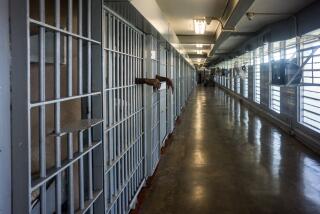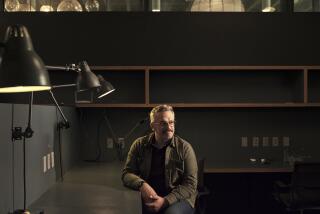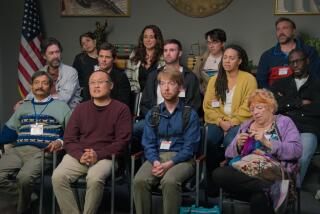Unanimous Juries Work--Let’s Not Change the Rule : Acceptance of 11-1 or 10-2 votes could erode defendants’ rights
The jury in the O. J. Simpson murder trial has not even begun to deliberate, yet speculation that it won’t be able to reach a verdict is prompting proposals to end the requirement for jury unanimity in most criminal trials. Such a change, although neither unprecedented nor unconstitutional, would be unwise.
California, like all but two other states, requires that jurors in felony cases reach unanimous verdicts. (A majority vote is allowed in civil trials.) The rule of unanimity, a historical artifact from our English-law roots, has served us well for nearly two centuries. Requiring unanimity is the best way to ensure that all jurors listen carefully to the evidence as it is given during the trial and to one another during deliberations. For that reason, unanimity guards against conviction of the innocent.
The trials of Eric and Lyle Menendez last year and the Simpson trial this year--all conducted in the glare of television lights--have raised questions about this important safeguard. The separate juries that heard the Menendez case each deadlocked despite the fact the brothers confessed to killing their parents. Many predict that the jury in the hard-fought Simpson case will deadlock as well.
REVISION BILLS IN SACRAMENTO: So these trials, unusual in nearly every aspect, have prompted calls to end the unanimity requirement as it applies to all California criminal trials. Two bills, introduced in the recently ended session of the state Legislature and expected to come up again next year, would establish “11-1” and “10-2” rules for most felony trials. (In 1972, the U.S. Supreme Court upheld non-unanimous jury rules passed in Louisiana in 1928 and Oregon in 1934.) Backers of a voter initiative to, among other changes, impose a 10-2 standard are now trying to qualify the measure for the ballot. All these proposals probably would prove to be constitutional, but would they deliver what they promise?
Supporters of a non-unanimous jury rule, including Gov. Pete Wilson and the California District Attorneys Assn., believe unanimity has caused too many hung juries. To proponents of the non-unanimous rule, hung juries mean needless taxpayer expense for retrials--all because of the intransigence of one or two jurors. Another result, they believe, is that many guilty defendants eventually end up walking free.
Hard data should drive policy, not unsubstantiated perceptions, no matter how widely held. Most states do not collect data on the rate of hung juries, so most reporting is based on estimates and extrapolations. The last authoritative national study on the rate of hung juries--done 30 years ago--found that less than 5% of all juries were unable to reach a verdict. Prosecutors and defense attorneys in Los Angeles County put the rate of hung juries here at about 13%, much higher than that reported in other urban areas. But contrary to public perception, there is no evidence that without the unanimity rule most of those hung juries would have voted for conviction. A recent analysis of cases represented by the L.A. public defender’s office found that most hung juries were divided 6-6, 7-5, 8-4 or 9-3, and only a fraction of those cases resulted in convictions on retrial.
OFTEN THERE’S JUSTIFICATION: What little reliable data there is fails to support the notion that most hung juries are caused by one or two hardheads. There are good explanations for hung juries in some cases. For example, when the evidence is ambiguous and the lawyers on each side are excellent, honest disagreement among the jurors may be a reasonable response. Allowing the majority of jurors to disregard the views of a minority could, in essence, undermine the historical obligation to prove guilt beyond a reasonable doubt.
Eliminating the unanimity rule could avoid some costly retrials and produce more convictions. It could also result in less deliberative juries and the conviction of innocent people.
If there is a problem with the quality of justice rendered by juries and the fairness of their deliberations, far more modest--and less dangerous--solutions are available.
Easing the burden of jury service in Los Angeles County would go far toward drawing a larger and more representative jury pool. Those summoned must now serve 10 days (which can stretch over weeks) or on one trial and receive a paltry $5 per day served.
Shortening the term, increasing the pay and calling on reluctant employers to release their workers for this civic duty would help. Tighter judicial control over trials and clearer jury instructions would help focus jurors on the key issues and facilitate deliberations.
Certainly these changes are neither as quick nor as cheap as simply eliminating the requirement for unanimity. But with no hard evidence to indicate that jury unanimity fails us, these alternatives are far preferable.
More to Read
Sign up for Essential California
The most important California stories and recommendations in your inbox every morning.
You may occasionally receive promotional content from the Los Angeles Times.










